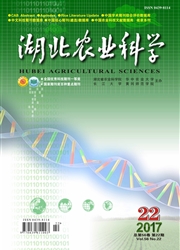

 中文摘要:
中文摘要:
采用2004-2013年上海市分行业化石能源消费数据,并与主要类型土地利用方式相结合,分析10年间土地利用产生的碳排放量变化情况。结果表明,2004-2013年土地利用碳排放量和碳吸收量均呈稳定上升趋势,增长率分别为42.60%和62.88%,但由于生产性土地面积基数较小,净碳排放量已增加至3 532.790万t/年。工矿用地是最大碳源,年均碳排放量占比达61.3%;而交通用地的单位面积碳排放量最高,且呈先上升后下降的趋势,在2008年达到峰值3.959 t/km2。碳足迹面积远高于上海市实际面积,2013年生态赤字已达67 516 km2。在区域层面,上海市是高强度点状排放源,碳减排压力较大,并从减源增汇角度对土地低碳利用提出了相应对策。
 英文摘要:
英文摘要:
Using the date of fossil energy consumption in Shanghai between 2004 to 2013,and combined with the main types of land use patterns,this study analyzed the change of carbon emissions generated by land-use in the decade. The results showed that the carbon emissions and carbon absorption of land use showed a steady upward trend from 2004 to 2013,with growth rate of 42.60% and 62.88%,but net carbon emissions have increased to 3.532 790 million tons per years. Industrial land was the biggest source of carbon,the annual carbon emissions accounted for 61.3%. The carbon emissions perunit area of traffic land was the highest,rose at first and dropped latter, and reached the peak value of 3.959 t/km2 in 2008. The area carbon footprint was much bigger than the actual area of Shanghai,the ecological deficit in 2013 reached 67 516 km2. In clued,Shanghai was a high strength punctiform emission source,and its pressure of carbon emission was high. At the end,some suggestions for reduce the carbon emission of land use was put forward.
 同期刊论文项目
同期刊论文项目
 同项目期刊论文
同项目期刊论文
 Land use dynamics, built-up land expansion patterns, and driving forces analysis of the fast-growing
Land use dynamics, built-up land expansion patterns, and driving forces analysis of the fast-growing 期刊信息
期刊信息
